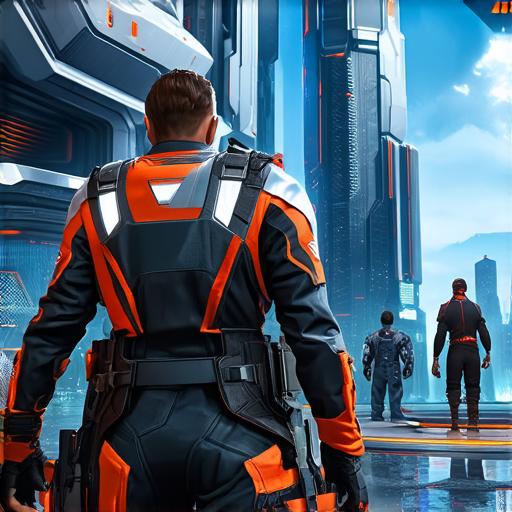
The Problem:
One of the main reasons behind the lack of visual diversity in Unreal Engine games is the limited availability of resources for creating non-humanoid characters and environments. While there are many tools available for creating humanoid characters, such as Skinned Mesh Renderers and Animators, there are few options for creating animals, plants, or other non-humanoid objects. This can make it difficult to create games that feature diverse characters and settings.
Another issue is the lack of representation in the Unreal Engine community. While there are many resources available for learning how to use the engine, there is a disproportionate representation of white, male developers. This can lead to a lack of diverse perspectives and ideas when it comes to game design and development.
The Impact:
The lack of visual diversity in Unreal Engine games can have a significant impact on both players and the industry as a whole. For one, it can perpetuate harmful stereotypes and reinforce existing biases. Additionally, it can limit the appeal of games to a wider audience and make them less accessible to people from different backgrounds.
Furthermore, the lack of visual diversity can also impact the success of games in certain markets. For example, a game featuring only white characters may not be as successful in Asia or Africa, where there is a greater demand for diverse representation in media.
Solutions:
There are several solutions that developers can implement to address the lack of visual diversity in Unreal Engine games. One option is to invest in new tools and resources for creating non-humanoid characters and environments. This could include new Skinned Mesh Renderers, Animators, or other features specifically designed for creating animals, plants, and other non-humanoid objects.
Another solution is to encourage more diversity within the Unreal Engine community. This could involve actively seeking out and promoting diverse perspectives in game design and development, as well as providing resources and support to underrepresented groups in the industry. For example, developers can join online communities that focus on promoting diversity in gaming, attend events and conferences that feature speakers from a variety of backgrounds, and mentor or sponsor programs that aim to increase diversity in the industry.
Finally, developers can also consider partnering with experts or organizations that specialize in creating diverse content for games. These partnerships can help ensure that games developed using Unreal Engine are more inclusive and representative of a wider range of perspectives and experiences. For instance, they can collaborate with artists and designers who specialize in creating non-humanoid characters and environments, or work with organizations that focus on promoting diversity in media to gain insight into diverse audiences’ preferences and needs.
Conclusion:
The lack of visual diversity in Unreal Engine games is an issue that needs to be addressed if we want to create truly inclusive and immersive gaming experiences. By investing in new tools and resources, encouraging diversity within the community, and partnering with experts and organizations, developers can help create a more diverse and representative gaming industry. Let’s work together to make gaming more accessible and enjoyable for everyone.
FAQs:
Here are some frequently asked questions about creating inclusive games:
- How can I create non-humanoid characters in Unreal Engine?
- How can I ensure that my game is inclusive of diverse perspectives and experiences?
- What are some resources that can help me create more inclusive games?
There are several tools available for creating non-humanoid characters in Unreal Engine, including Skinned Mesh Renderers and Animators. Additionally, there are many third-party plugins and assets that can help you create more detailed and realistic non-humanoid characters. For instance, developers can use tools such as Blender or Maya to design and export custom models for non-humanoid characters, which can then be imported into Unreal Engine using various importers like FBX, OBJ, or Collada.
To ensure that your game is inclusive of diverse perspectives and experiences, it’s important to actively seek out and promote diverse perspectives in game design and development. This could involve working with underrepresented groups in the industry or partnering with experts who specialize in creating content for diverse audiences. Developers should also consider conducting research on diverse audiences’ preferences and needs, incorporating feedback from beta testers from different backgrounds, and testing the game in various markets to ensure it resonates with a broader audience.
There are several resources available that can help developers create more inclusive games, including online communities, conferences, and events focused on promoting diversity in gaming. For instance, the International Game Developers Association (IGDA) has a Diversity Special Interest Group that provides resources and support for game developers who want to create more diverse games. Additionally, there are various online forums and communities where developers can connect with like-minded individuals and share ideas and best practices. Finally, attending conferences and events focused on diversity in gaming can provide valuable networking opportunities and access to experts in the field.
